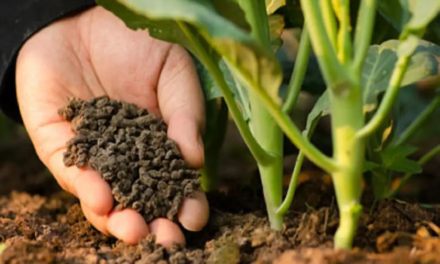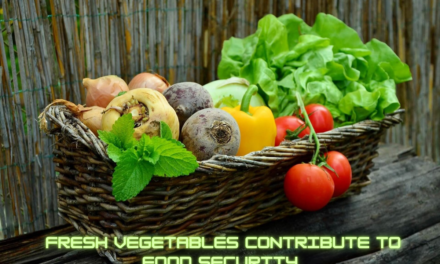Packaging plays a critical role in determining the shelf life of dairy and meat products by protecting them from environmental factors, preventing contamination, and maintaining their sensory and nutritional qualities. Here’s how packaging affects the shelf life of these perishable goods:
1. Barrier Properties
- Impact: Packaging materials act as barriers to oxygen, moisture, light, and contaminants, which can degrade dairy and meat products.
- Key Features:
- Oxygen Barrier: Limits exposure to oxygen, slowing oxidation and microbial growth.
- Moisture Barrier: Prevents water loss in meat (reducing shrinkage) or moisture absorption in dairy (preventing spoilage).
- Light Barrier: Protects products like milk and cheese from light-induced nutrient degradation and flavor changes.
- Examples:
- Vacuum-sealed packaging for meats reduces oxygen exposure.
- Opaque or UV-blocking cartons for milk preserve vitamin content.
2. Modified Atmosphere Packaging (MAP)
- Impact: Replacing the air inside the packaging with a specific gas mixture helps extend the shelf life.
- Key Features:
- High Carbon Dioxide Levels: Inhibits bacterial growth in meat.
- Nitrogen: Displaces oxygen to prevent oxidation in both dairy and meat.
- Examples:
- MAP for red meat maintains a bright red color and delays spoilage.
- MAP for shredded cheese reduces clumping and microbial contamination.
3. Vacuum Packaging
- Impact: Removes air from the package, slowing microbial growth and oxidation.
- Key Features:
- Creates an anaerobic environment, inhibiting spoilage bacteria.
- Preserve texture, flavor, and color by minimizing contact with oxygen.
- Examples:
- Vacuum-sealed raw meats and processed cheeses have longer shelf lives compared to non-vacuum-packed alternatives.
4. Antimicrobial Packaging
- Impact: Incorporates substances that inhibit microbial growth, directly extending shelf life.
- Key Features:
- Embedded antimicrobial agents are released into the product environment, suppressing pathogens.
- Coatings or films with natural antimicrobials like silver nanoparticles or essential oils.
- Examples:
- Antimicrobial films for deli meats and cheese slices.
5. Active Packaging
- Impact: Packaging interacts with the food to extend freshness.
- Key Features:
- Oxygen Scavengers: Absorb residual oxygen to prevent spoilage.
- Ethylene Absorbers: Delay ripening in products like cheese that continue to mature.
- Examples:
- Meat trays with integrated oxygen-absorbing pads.
6. Temperature Control
- Impact: Packaging designed to maintain temperature stability helps prevent spoilage.
- Key Features:
- Insulated or thermal packaging is used to transport chilled products.
- Indicators on packaging to alert if a product has been exposed to unsafe temperatures.
- Examples:
- Temperature-sensitive labels on dairy products or frozen meat.
7. Preventing Cross-Contamination
- Impact: Secure packaging prevents exposure to external contaminants.
- Key Features:
- Leak-proof seals reduce the risk of contamination from external sources.
- Individual portions minimize handling and exposure during consumption.
- Examples:
- Pre-sliced, vacuum-sealed cheese or individually wrapped meat portions.
8. Packaging Formats for Convenience
- Impact: Certain formats help preserve products after opening, maintaining quality longer.
- Key Features:
- Resealable zippers or sliders to protect against moisture and air ingress.
- Single-serve portions to minimize exposure after opening.
- Examples:
- Resealable pouches for grated cheese or cold cuts.
9. Moisture Management
- Impact: Packaging can control the internal environment by absorbing excess moisture.
- Key Features:
- Absorbent pads in meat trays capture excess liquids, reducing microbial growth.
- Moisture-control films maintain cheese texture.
- Examples:
- Meat packages with absorbent pads to reduce liquid buildup.
10. Preventing Flavor and Odor Transfer
- Impact: Proper packaging prevents cross-contamination of flavors and odors, especially in mixed storage environments.
- Key Features:
- High-barrier materials that isolate the product from external odors.
- Multi-layered films for sensitive products like milk or butter.
- Examples:
- Multi-layer cartons for milk to maintain fresh flavor and protect against fridge odors.
11. Reducing Freezer Burn
- Impact: Packaging for frozen meat minimizes dehydration and oxidation.
- Key Features:
- Airtight seals to prevent moisture loss.
- Barrier films to protect against ice crystal formation.
- Examples:
- Vacuum-sealed packaging for frozen cuts of meat.
12. Sustainability Integration
- Impact: Eco-friendly packaging can maintain shelf life while meeting consumer demand for sustainability.
- Key Features:
- Compostable or recyclable materials that still offer effective barrier properties.
- Use of biodegradable films with antimicrobial properties.
- Examples:
- Plant-based biodegradable packaging for dairy and meat products.
Challenges in Packaging for Dairy and Meat
- Cost: Advanced packaging like MAP or vacuum systems can be expensive to implement.
- Material Compatibility: Sustainable materials may lack the same barrier properties as traditional plastics.
- Shelf Life vs. Freshness: Extending shelf life must balance with maintaining natural taste and texture.
Conclusion
Effective packaging is essential for extending the shelf life of dairy and meat products while ensuring safety, quality, and freshness. Innovations in barrier materials, active packaging, and sustainable options continue to improve how these products are preserved, meeting both consumer and environmental demands.
Hashtags
#EcoFriendlyPackaging #ConveniencePackaging #FoodIndustry #PackagingDesign #FoodWasteReduction #PackagingInnovation #HealthyEating #FoodPackagingDesign #PackagingSolutions #FoodPackagingTrends #PackagingMaterials #FoodPackagingIdeas #PackagingForTheFuture #FoodPackagingExperts #PackagingSustainability #FoodPackagingInsights #PackagingForFreshness #FoodPackagingRevolution #PackagingForHealth #FoodPackagingSolutions.









